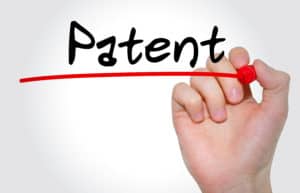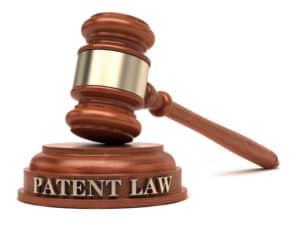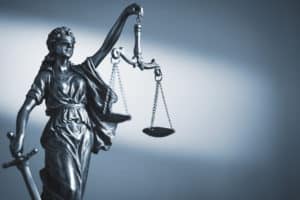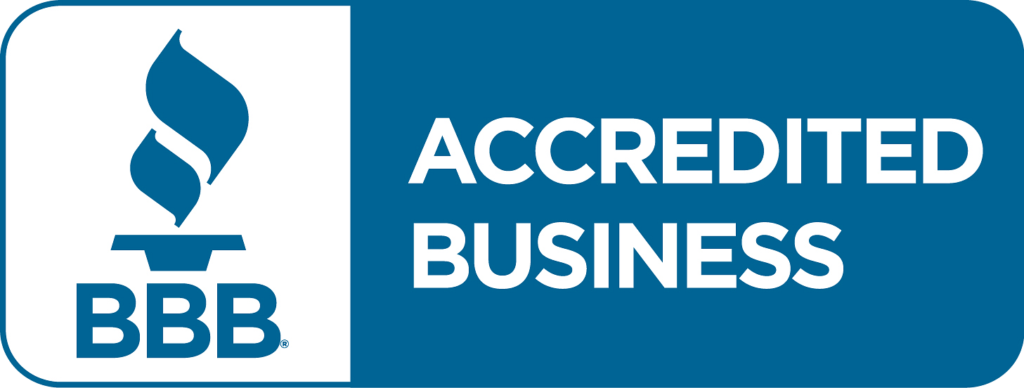A patent is a legal document that gives an inventor the exclusive right to make, use, and sell an invention for a set period of time. In order to receive a patent, an inventor must file a patent application with the U.S. Patent and Trademark Office. The patent application process can be complex, but some simple steps can help ensure a successful application.
Ten Dos and Don’ts for the Best Patent Application
Table of Contents
Toggle
First to file- file patent system
Because the U.S.A. is now a first to file, not a first to invent, filing patents as early as possible is essential. The American Invents act became law on March 16, 2011, and switched the U.S. patent system to first to file as of March 16, 2013. An inventor does not automatically get patent rights unless you file and prosecute a provisional patent application. This law means that irrespective of who was the first inventor, the inventor who files the patent application first gets the patent.
Prior art search
Any publications that disclose your invention or parts thereof are prior art references; the publications can be paper or digital. The earliest filing date can establish the earliest priority date, which is advantageous because you will be ahead of others. This earliest priority date will reduce prior art references during patent prosecution and enhance your chances of a patent grant. Thus, filing an earlier patent application will boost your prospects of getting a patent by being the first to file and remove potential prior art references.
Disclose your invention in complete detail: One of the essential requirements for a patent is to describe its invention in detail. This law is called enabling requirement and allows a person with ordinary skills and knowledge in your field of endeavor to make and use their inventions without doing undue or unnecessary experimenting.
Avoid a discussion of the prior art in your application
Before I detail this, I must inform you that every inventor and others associated with filing a patent application must disclose any prior art information known to them to USPTO. You must meet this legal requirement and duty of honesty and good faith 2001-Duty of Disclosure, Candor, and Good Faith (uspto.gov). However, the best way to disclose prior art is through an information disclosure statement, which lists each reference you want the USPTO examiner to consider. If you take this step, you do not need to do anything else. 609-Information Disclosure Statement (uspto.gov)
When drafting your patent application, you must think about what information will be helpful to include in your patent application. As an inventor, you will need to write many different types of articles, white papers or scientific peer-reviewed publications, marketing documents, etc. These, but not patent applications, require discussion of others’ work related to your invention. For example, you are writing to convince or appease your peers who want continuity with previous work; discussing previous work associated with your invention is warranted and often vital.
However, this is not so much when applying for patents. For instance, if you identify somebody else’s work (and even yours) as prior art in your patent application, the USPTO Examiner can use your admission against you while negotiating your patent application during prosecution. In this case, the Examiner can issue either anticipation, obviousness, or both rejections under the statutory categories of 35 U.S.C. 102 and 103, which could prevent you from getting patents. This scenario can be unfortunate in cases where the Examiner, without your admission, would not have identified the particular reference as prior art. Thus, the prior art discussion you mention in your application can be used against your application as prior art, even if the reference is not “prior art reference.”
Prevent challenges to your issued patents

Disclosure in your patent application can open your patents to challenges of invalidation of issued pated. The USPTO has a rigorous legal process for invalidating issued patents and canceling patents obtained by unfair means. One such process is Inter Partes Review (I.P.R.), where a person may challenge the validity of another’s issued patent. The Federal Circuit has recently held that, according to federal statute, any person who wants initiate an I.P.R. must do so based on “a patent or printed publication.”
Although disclosure of your patent can not be used to initial I.P.R., after the I.P.R. is initiated, the disclosure can be used against your patent to cancel your patented claims. So applicants have to be careful what they say in their specifications because it can later come back and haunt them during an I.P.R. proceeding.
This is a well-known fact among patent attorneys and patent practitioners, so the applicant should make sure that anything he/she says will not hurt his or her case when trying to defend against challenges to their claims made by others.
It is important to note that the Examiner bears the legal responsibility to determine and demonstrate that your invention is anticipated, obvious, or both.
Do not denigrate the prior art
There is no benefit to discussing the flaws of others before you. The purpose of drafting your patent application is to describe your invention correctly within the confines of the law. Moreover, criticizing others’ work may cause the Examiner to question your credibility.
Do show the utility and benefit of your invention
Instead of detailing the flaws of others, talk about the benefits of your invention. If you have experimental data, use it to show the advantages of your invention. You can even use comparative data. For example, your composition performs better at disinfecting and is more specific anti-microbial without any harmful side effects than a placebo or another composition on the market; include such data. Such data establish advantages and improvements in your composition and enhances your credibility. Such data, like a picture, is worth a thousand words.
Do not digress
You must describe your invention and any possible alternatives to your invention, and other methods of making and using it. However, do not stray and expand your invention’s scope because you will open up your application to a more significant number of prior art references, which you will need to overcome during the patent prosecution. It may be better to file another patent for the additional alternative, especially if they are non-analogous.
Do be mindful of future patent prosecution and product developments
There is a fine line between digressing and drafting a patent application by being mindful of patent prosecution and future product and business developments. Although it is impossible to predict Examiner’s prior art search results and arguments during prosecution, a good patent attorney and drafter will include a variety of alternatives to combat the Examiner’s arguments and claim amendments.
In addition, an efficient patent practitioner and drafter must be cognizant of continuations and continuation-in-part patent applications that may be needed to develop a strategic patent portfolio for the best value and broadest product protection. In addition, if possible, do add information to prevent others from getting around your patent.
Language

Be precise, often concise, and careful in your language. Anything that you write that may be slightly hinting and suggestive of obviousness can harm your chances of getting a patent. Do not use the exact words to describe more than one separate part of your invention. Remove needless words. Drafting a lengthy patent application is not your goal. A patent attorney and drafter must be aware of changes in recent patent law guidelines so that they can use correct language.
Prevent unforeseen consequences of patent application writing
Patent applications are a minefield of potential pitfalls you need to avoid when drafting them. The most common problems come from missed details and improper language, but there’s also the chance for things like definitions or illustrations not being thorough enough in some cases, which can lead down an obvious path towards rejection if these become deficiencies during exam time
When you decide to pursue a patent, your application must be high quality. A skilled patent attorney and practitioner can help avoid making accidental errors and admissions in this process and ensure success for prosecution and any future litigation against infringing parties who may use the patented products and processes as their own.
Patent law-legal requirements for a patent application

Your patent application must also meet legal requirements so that the application can become a granted patent.
There are several legal requirements that every patent application must satisfy legal criteria to avoid rejection during patent prosecution. Below you will learn about four such patent laws.
Patent law as detailed in the 35 USC § 112
This section has two parts 35 USC § 112(a) and 35 USC § 112(b).
Patent law, according to 35 USC § 112(a)
35 USC § 112(a) is an essential provision in the patent system and requires that claims have adequate support in the specification in the form of drawings and written descriptions. Accordingly, if the specification does not provide adequate support, the Examiner can reject the unsupported claimed features not disclosed in the specification. This requirement is based on the principle detailed in the following is a quotation of 35 U.S.C. 112(a):
(a) IN GENERAL.—The specification shall contain a written description of the invention, and of the manner and process of making and using it, in such full, clear, concise, and exact terms as to enable any person skilled in the art to which it pertains, or with which it is most nearly connected, to make and use the same, and shall set forth the best mode contemplated by the inventor or joint inventor of carrying out the invention.
Thus, any features not clearly depicted or described in the patent cannot be claimed since they lack sufficient support.
Patent law, according to 35 USC § 112(b)
35 USC § 112(b) requires that the claims be considered valid and adhere to strict formatting and language requirements. As you can appreciate, patent claims are an essential component of any patent application, as they define the scope of protection afforded by the patent. Suppose the legal requirements of 35 USC § 112(b) are not met. In that case, USPTO Examiner will issue a rejection saying that particular claim language is inherently unclear or indefinite, which can significantly reduce the chances of obtaining a patent.
second paragraph requires that a patent application specification shall conclude with one or more claims particularly pointing out and distinctly claiming the subject matter which the inventor or a joint inventor regards as the invention.

Patent law as detailed in the 35 USC § 101
This section defines what is considered patentable subject material. You can read details of this in our previous blog here.
The U.S. Patent law states that patents can only be granted for “any new and useful process, machine, manufacture, or composition of matter, or any new and useful improvement thereof.” According to courts, this law does not cover subject matter with any invention that attempts to claim a natural law (like gravity, for example), an abstract idea, or the fundamental laws of nature.
The 101 rejection is surprisingly common in applications for patents applied to software and biotechnology fields. In these cases, the USPTO will often cite a decision from the Supreme Court’s 2014 Alice v. CLS Bank ruling. This decision held that an abstract idea isn’t eligible for patent protection unless it includes an “inventive concept” that transforms the idea into something significantly different from what exists in the prior art.
The claim must consist of more than mere recitation of the excluded categories and include a concrete application or hardware implementation for software inventions. For example, an Examiner will reject a patent that claims that the Managing Electric Power Distribution method might be rejected under Section 101 if it merely recites conventional steps like monitoring electricity usage and routing power to different distribution points based on demand. Often, the exception is in method claims, such as patenting business procedures, software, method of treatment, etc.
Patent law as detailed in the 35 USC § 102
One of the key requirements is that the invention must not have been previously disclosed in a “single prior art reference.” In other words, the invention must be new and novel to be granted a patent. If an examiner finds that one prior art reference contains all the claimed elements, the application anticipates the invention, and then the application will be rejected. Thus, it is essential to conduct a thorough search of the prior art before submitting a patent application.
Patent law as detailed in the 35 USC § 103
The “obviousness” of a given patent claim is determined by evaluating a combination of prior art references against the limitations set forth in the specific claim. Additionally, ff there is motivation in the prior art references themselves to support the combination, and each of the references is reasonably compatible with one another, then the claims may be rejected on obviousness grounds. This determination is made by the USPTO on a case-by-case basis and has been shaped by an abundance of case law. It is a complex issue that can be difficult to predict. However, understanding the basic principles involved can help to increase the likelihood of success in obtaining a patent. Thus, understanding this law and a thorough prior art search before submitting a patent application can assist a patent practitioner in drafting an application to avoid this rejection.
Takeaway-hire a competent patent attorney
Do hire a patent attorney, lawyer, or patent agent who is registered with the USPTO, check registered patent practitioners here. They, a patent attorney and practitioner, can help you navigate the complexities of the patent application drafting and process and improve your chances of success. Both patetn drafting and applying for a patent are complex processes, and it’s important to make sure that all legal requirements are met to avoid any problems down the road. Consulting with a patent attorney or patent agent can ensure that your application is in order and that all the necessary steps are taken.
In addition, hiring a professional to help with your patent application can save you time and money in the long run, and it will give you peace of mind knowing that your product is adequately protected. By consulting with a patent attorney or agent, you can be confident that your application is on the right track and that you’re taking all the necessary steps to protect your invention. Contact us today for a free initial consultation and to learn more about how we can help you with your patent application.




